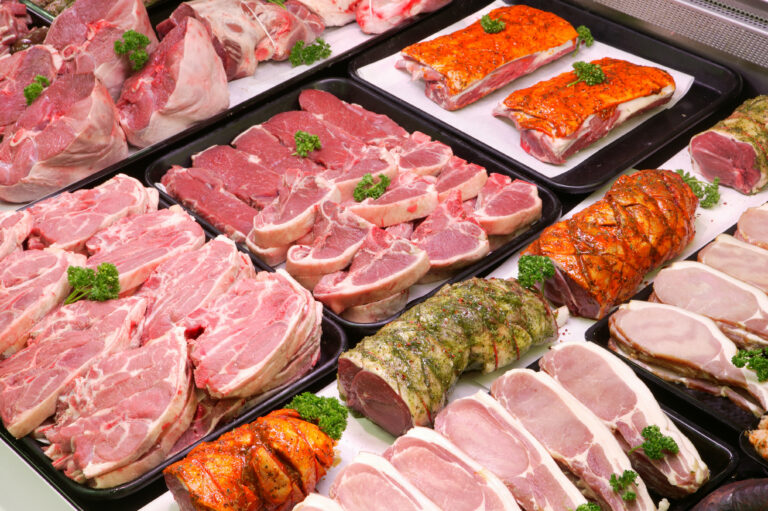5 Tips Aged Beef Guide to Enhance Your Culinary Experience
Key points: Aged beef enhances flavor and tenderness through aging processes like dry-aging (15-120 days) for intense nutty taste and wet-aging (5-28 days) for juicier texture. Consider cut, aging duration, and price when buying. Proper storage and cooking methods further elevate the beef’s quality and taste.
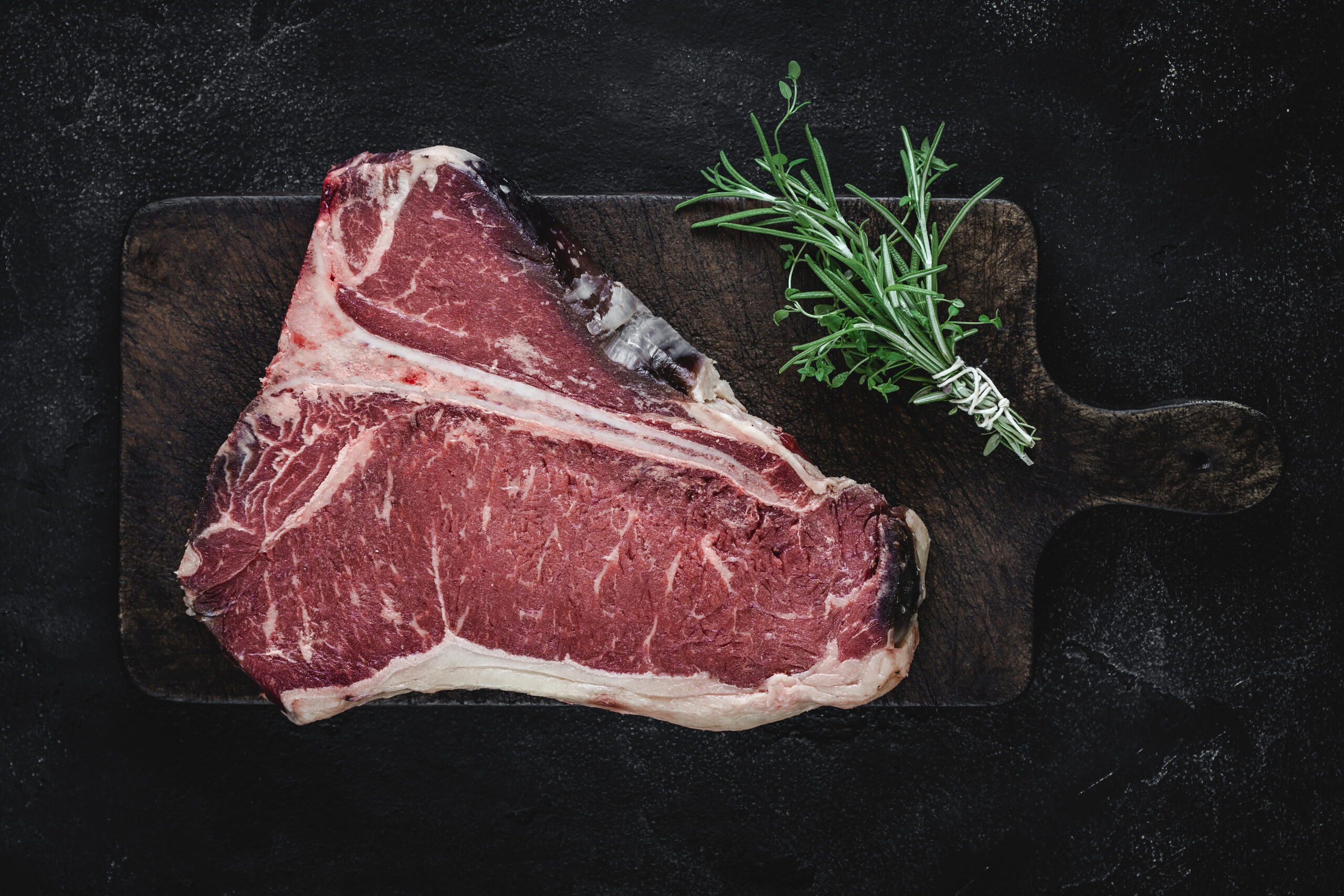
Craving the rich, deep flavors of aged beef but unsure where to start? This guide will help you navigate the world of aged beef, ensuring you get the best cuts for your culinary adventures.
Disclosure: As an Amazon Associate, this site earns from qualifying purchases. Thank you!
Understanding Aged Beef
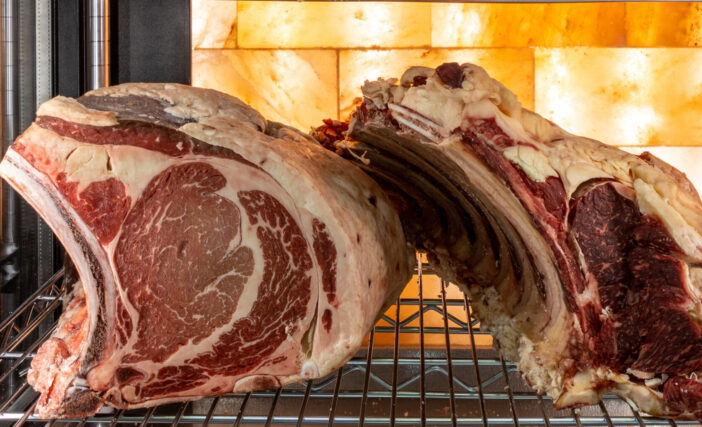
What Is Aged Beef?
Aged beef is meat that’s been stored under precise conditions to enhance its flavor and tenderness. The aging process allows enzymes to break down muscle fibers, improving texture and taste.
Types of Aged Beef
- Dry-aged beef: Stored in a controlled environment for 15-120 days. This type develops a deep, nutty flavor due to moisture loss and fat oxidation.
- Wet-Aged Beef: Vacuum-sealed and stored for 5-28 days. It retains moisture, resulting in a milder, juicier taste compared to dry-aged beef.
The Science Behind Aging Beef
Enzymes naturally present in beef degrade proteins and fats during aging. This breakdown of muscle fibers tenderizes the meat while enhancing its flavor. Dry-aging removes water, concentrating the beef’s flavor, while wet-aging maintains moisture for a different mouthfeel.
Benefits of Aged Beef
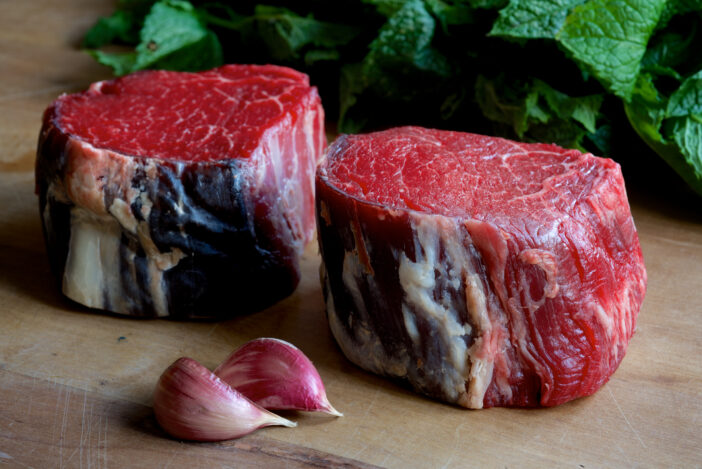
Aged beef isn’t just a luxury; it’s a culinary delight that enhances several aspects of your dining experience.
Enhanced Flavor
Aged beef intensifies the meat’s natural flavors. Dry aging results in a nutty, rich flavor due to moisture loss and fat oxidation. Wet-aging keeps the beef juicier, offering a slightly metallic, but deeply savory, taste.
Improved Texture
Aged beef is more tender. It breaks down muscle fibers and connective tissues, making each bite exceedingly tender. This process is meticulous, requiring precise conditions to achieve that melt-in-your-mouth texture.
Nutritional Differences
Aged beef retains most of its nutritional value. While there’s a slight loss of water-soluble vitamins in dry-aged beef, the concentration of proteins and healthy fats remains high. Wet-aged beef continues to provide essential nutrients without significant nutritional degradation.
Where to Buy Aged Beef
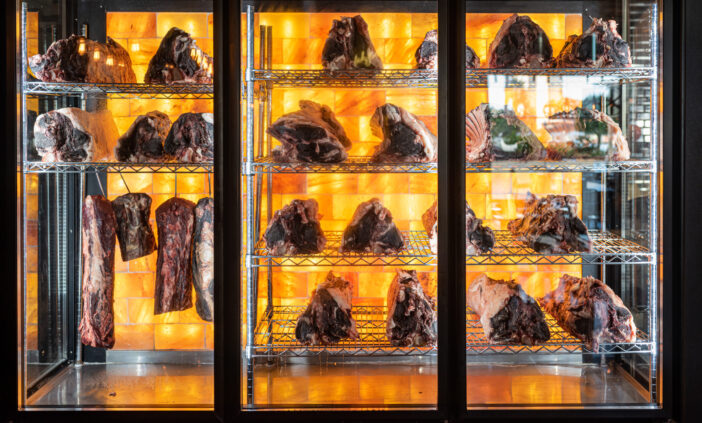
Local Butcher Shops
Visit local butcher shops for high-quality aged beef. These experts often have in-house aging facilities. Ask for recommendations based on their current stock and aging methods.
Online Retailers
Order aged beef from online retailers. Websites like Snake River Farms and Porter Road offer a wide selection. Check reviews and shipping policies for the best experience.
Specialty Grocery Stores
Explore specialty grocery stores for premium-aged beef. Stores like Whole Foods and Trader Joe’s frequently carry both dry-aged and wet-aged options. Inquire with the meat department for specific details.
Factors to Consider When Buying Aged Beef
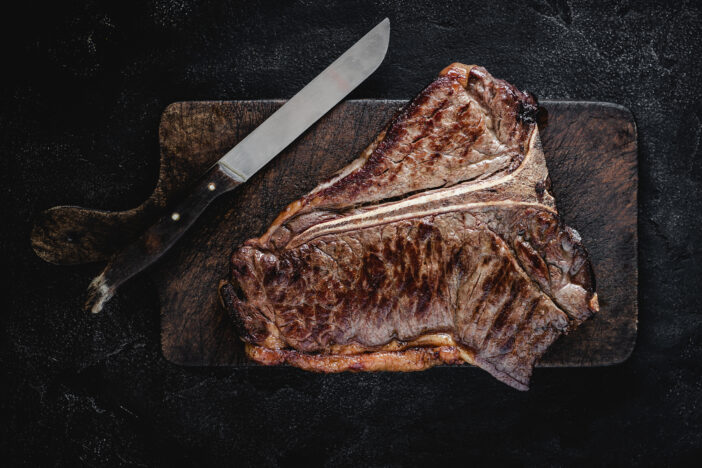
Type of Aging: Dry-Aged vs. Wet-Aged
Decide between dry-aged and wet-aged beef. Dry-aged beef, aged for 15-120 days, has a more intense, nutty flavor due to moisture loss. Wet-aged beef, aged for 5-28 days, retains more moisture, resulting in a juicier texture. Choose based on your flavor and texture preferences.
Cut of Beef
Select the right cut. Prime cuts like ribeye, striploin, and tenderloin are ideal for aging. These cuts have the marbling and muscle structure that benefit most from the aging process. Opt for high-quality cuts to maximize the benefits of aged beef.
Aging Duration
Pay attention to the aging duration. Longer aging, like 45-60 days, enhances tenderness and flavor but can also increase price. Shorter aging periods, like 15-28 days, offer a balance between taste, texture, and cost. Choose the duration based on your preference and budget.
Price Variations
Be mindful of price variations. Aged beef tends to be more expensive due to the time and resources required for aging. Prices can vary by type, cut, and aging duration. Compare options from various sources to find the best value for your budget.
How to Store Aged Beef
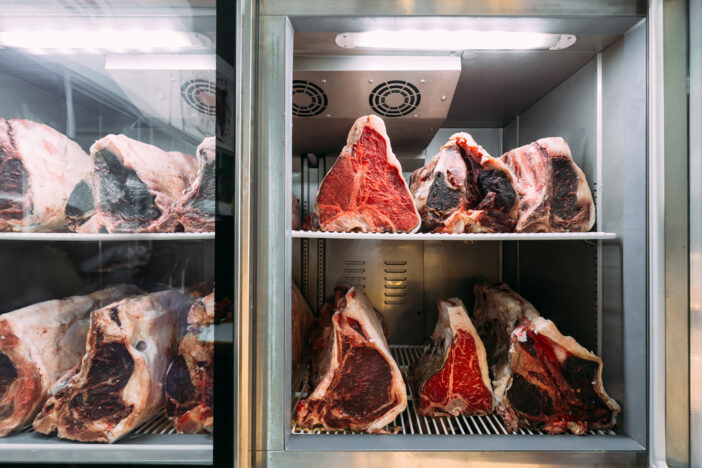
Proper storage is key to maintaining the quality and flavor of aged beef.
Ideal Storage Conditions
- Keep it cold. Store aged beef in a refrigerator set between 32°F and 39°F.
- Maintain humidity. Keep the humidity level around 85%.
- Use wrapping. Wrap beef in butcher’s paper or cheesecloth to allow it to breathe.
Tips for Long-Term Storage
- Freeze if needed. If storing for more than a week, freeze the beef at 0°F.
- Double-wrap. Use vacuum-sealed bags or double-wrap in plastic before freezing.
- Label clearly. Mark the date on the packaging to track freshness.
Best Practices for Cooking Aged Beef
Cooking Techniques
Use high heat to sear aged beef, locking in flavor. A cast-iron skillet or grill works best. Aim for a medium-rare finish, hitting an internal temperature of 130°F. Rest the meat for at least 5 minutes before slicing.
Recommended Seasonings
Season aged beef simply. Use coarse salt, cracked black pepper, and a touch of garlic powder. Avoid overpowering flavors to let the beef’s natural taste shine through. Fresh herbs like thyme or rosemary can add subtle complexity.
Pairings and Recipes
Pair aged beef with robust sides like roasted garlic mashed potatoes or sautéed mushrooms. Rich sauces, such as a red wine reduction or béarnaise, complement the beef beautifully. Classic recipes include steak au poivre and ribeye with blue cheese butter.
Frequently Asked Questions
What is the difference between dry-aged and wet-aged beef?
Dry-aged beef is aged for 15-120 days and has an intensified flavor, while wet-aged beef is aged for 5-28 days, resulting in a juicier texture.
What cuts of beef are best for aging?
The best cuts for aging include ribeye and tenderloin, as they develop superior tenderness and flavor during the aging process.
How does the aging duration affect the beef?
Longer aging durations enhance the tenderness and flavor but also increase the price due to the resources required for aging.
Where can I purchase aged beef?
You can purchase aged beef from local butcher shops, online retailers like Snake River Farms, and specialty stores like Whole Foods.
How should aged beef be stored?
Aged beef should be stored at cold temperatures with high humidity levels and wrapped properly to maintain quality and flavor. For long-term storage, freezing and labeling for freshness tracking are recommended.
What are the best practices for cooking aged beef?
Use high heat to sear the meat and season it with salt, pepper, and garlic powder. Pairing suggestions include roasted garlic mashed potatoes or red wine reduction sauces.
Can you recommend some recipes for aged beef?
Classic recipes include steak au poivre and ribeye with blue cheese butter, both of which complement the rich flavors of aged beef.




